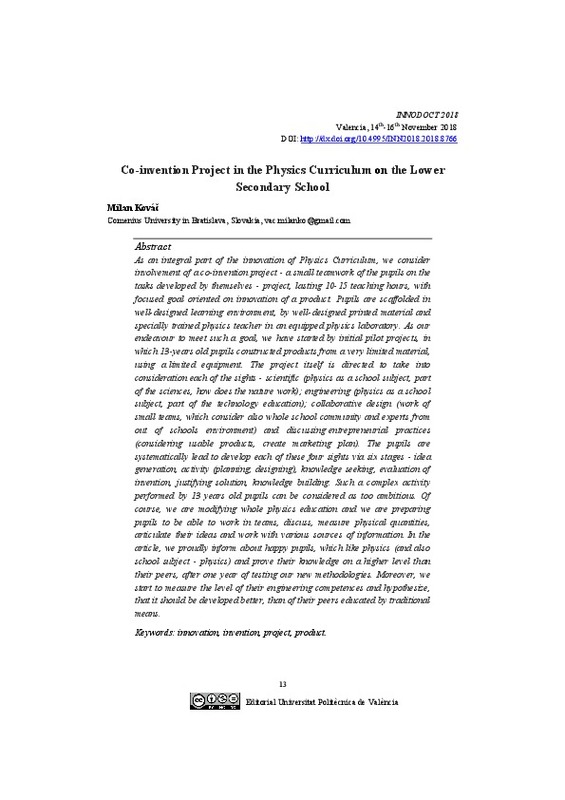JavaScript is disabled for your browser. Some features of this site may not work without it.
Buscar en RiuNet
Listar
Mi cuenta
Estadísticas
Ayuda RiuNet
Admin. UPV
Co-invention Project in the Physics Curriculum on the Lower Secondary School
Mostrar el registro completo del ítem
Kováč, M. (2019). Co-invention Project in the Physics Curriculum on the Lower Secondary School. En INNODOCT/18. International Conference on Innovation, Documentation and Education. Editorial Universitat Politècnica de València. 13-21. https://doi.org/10.4995/INN2018.2018.8766
Por favor, use este identificador para citar o enlazar este ítem: http://hdl.handle.net/10251/121514
Ficheros en el ítem
Metadatos del ítem
| Título: | Co-invention Project in the Physics Curriculum on the Lower Secondary School | |
| Autor: | Kováč, Milan | |
| Fecha difusión: |
|
|
| Resumen: |
[EN] As an integral part of the innovation of Physics Curriculum, we consider involvement of a co-invention project - a small teamwork of the pupils on the tasks developed by themselves - project, lasting 10-15 teaching ...[+]
|
|
| Palabras clave: |
|
|
| Derechos de uso: | Reconocimiento - No comercial - Sin obra derivada (by-nc-nd) | |
| ISBN: |
|
|
| Fuente: |
|
|
| DOI: |
|
|
| Editorial: |
|
|
| Versión del editor: | http://ocs.editorial.upv.es/index.php/INNODOCT/INN2018/paper/view/8766 | |
| Título del congreso: |
|
|
| Lugar del congreso: |
|
|
| Fecha congreso: |
|
|
| Código del Proyecto: |
|
|
| Agradecimientos: |
|
|
| Tipo: |
|








